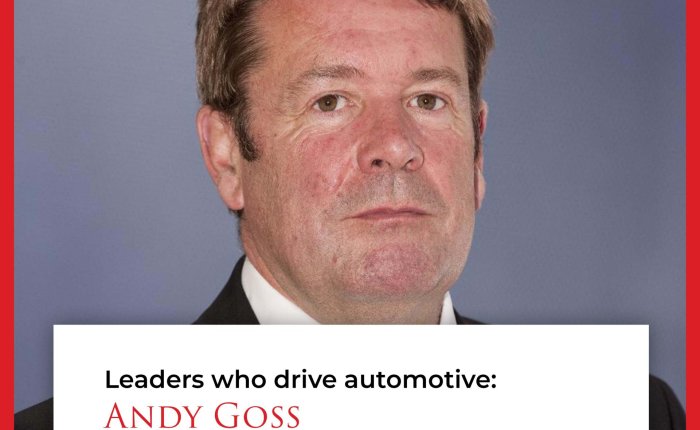The new entrants arriving in the mature UK car and van market aren’t just rocking the boat, they’re challenging the established order in every aspect of distribution and retail. The most visible aspect is retail price, with headline grabbing numbers that pose an existential threat to some legacy brands and products.
In a market where nearly every new vehicle is financed, the predicted residual value (RV) is the hot topic for every stakeholder in the sales process from OEMs and distributors, to finance providers, fleet buyers and most importantly the end customer.
The demand for the skills required to manage the RV of a vehicle and brand has never been greater as Simon Harris, a valuations specialist and commentator on the market told Al Clarke from Ennis & Co Group.
Simon Harris: Residual values are at the heart of how the UK new car market works. They represent what a vehicle is expected to be worth at the end of its first ownership cycle, which is commonly three years. From that, they determine the monthly cost of around 90% of all new cars on the road today, because the majority of new vehicles are financed rather than bought outright.
The predicted future value effectively underpins the affordability of that car. If a car’s residual value forecasts are weak, the brand has to subsidise finance rates to stay competitive, and that eats into the brand’s profitability.
But residual values are more than just a financial measure – they reflect the market’s confidence in a brand’s desirability, quality, and sustainability. Managing them properly is one of the best indicators of how strong or weak a brand’s long-term position really is.
Al Clarke: Residual values have always been central to any finance deal, so why are they now such a hot topic?
SH: I would say the last five years have been a lot more volatile than we’ve seen for a long time. The used car market has gone through quite substantial change for both cars and vans.
The pandemic caused major supply shortages of vital components, which sent used prices to record highs because there just wasn’t that flow of registrations onto the new car market – so used cars became more desirable. When production came back on stream, values started to normalise, but it’s more complex now.
We’ve got a wider mix of powertrains – petrol, diesel, hybrid, plug-in hybrid and electric – and they all have varying depreciation profiles. Forecasting isn’t just about simple model cycles or brand reputation anymore; there’s a lot more to it with these different powertrain options.
EVs are the best example of how that has materialised. EV values have been under significant pressure in the UK because the ZEV mandate has driven a surge in registrations, as manufacturers prioritise EV sales to avoid financial penalties if they don’t meet those targets. At the same time, low Benefit-in-Kind tax rates have made EVs very attractive to company car drivers, leading to higher fleet volumes of EVs.
I would say that few businesses anticipated how all of these factors would combine, and with limited incentives and education for used car buyers, how that would affect the second-hand market for EVs. As a result, manufacturers are now supporting new EV registrations with discounts on leases, because that’s more cost-effective for them than paying the fines they’d incur if they didn’t sell the EVs.
It’s a difficult balance, and it shows how the relationship between regulation, taxation, and consumer behaviour is becoming increasingly linked – everything now depends on another factor.
AC: But the Chinese brands seem to have found a better balance in this equation?
SH: New brands arriving in the UK typically have a lower price point, and when it comes to the residual value, you certainly can’t lose more than the amount of money that the vehicle costs. But it’s not an easy task for Chinese brands to break into a market where there is strong brand recognition.
MG has been a relative success story because it has a long heritage in the UK and in Europe, and its Chinese ownership has been a relatively short part of that history. Most car buyers know what an MG is, either as an echo from the past or through a relatively high public profile – they recognise the badge and have an idea of what it represents.
New entrants such as BYD, Omoda, JAECOO and others don’t yet have that advantage of familiarity. The products can be very strong, but brand familiarity takes time to build. Some early pricing strategies give the impression of good value retention, but that can be a function of competitor positioning rather than proven residual value strength.
Another important factor, I suppose, is cultural. The ownership profile and cycle in China is different from the UK, with less emphasis on long-term resale value. That mindset doesn’t translate directly to the established UK market, where finance products depend on stable residual values.
So, part of their challenge is to rethink their approach and pace their growth to ensure they protect long-term brand equity. To the uninitiated, there does seem to be an element of witchcraft about residual values and predicting the future.
AC: What can companies do to manage RVs?
SH: I would say the most important thing is taking control of the factors that lie within your power. The brands that maintain discipline over their own supply, sales channels, and marketing programmes are doing the best job of protecting their values.
That means being selective about tactical registrations, maintaining a sensible balance between retail and fleet, and supporting their dealers with healthy used car programmes as well.
It’s also vital for brands to communicate consistently with leasing companies and data providers, because transparency builds confidence – and confidence drives stronger residual values.
Specification and pricing strategy also come into it. Launching a car with the right trim mix, avoiding heavy discounting, and planning product updates carefully all help preserve value.
Ultimately, it’s about brand discipline. Every department within a brand – product, marketing, sales, aftersales – has its own part to play. It’s hard to address residual value issues after a brand has launched; it’s something that needs to be built into the strategy from the start.
AC: How do you help brands to manage their RVs?
SH: It’s about helping manufacturers align their ambition with market realities. That’s particularly valuable for those entering the UK or European markets for the first time.
There are lots of products out there that have data for forecasts, and most of the big leasing companies have their own systems for predicting values as well. But the key is helping brands understand how their decisions on pricing, volume, lifecycle, and channel management all affect long-term value and perception.
With many Chinese OEMs, for example, the local teams they recruit in the UK are already very experienced in these kinds of roles at other brands, so they understand how important residual values are. However, they can sometimes struggle to communicate that message to senior management overseas. Having an independent voice to reinforce that perspective can help bridge the cultural gap and protect the brand’s reputation before it’s even established.
So it isn’t about guesswork, it’s about learning from history. It’s about strategy, discipline, and credibility, and getting it right from day one to lay the foundation for sustainable success in a very demanding market.
Simon Harris provides market insight & strategic guidance on evolving market trends. He brings hands-on experience in developing RV forecasting methodology and challenging established assumptions particularly regarding electric vehicle residual values.






